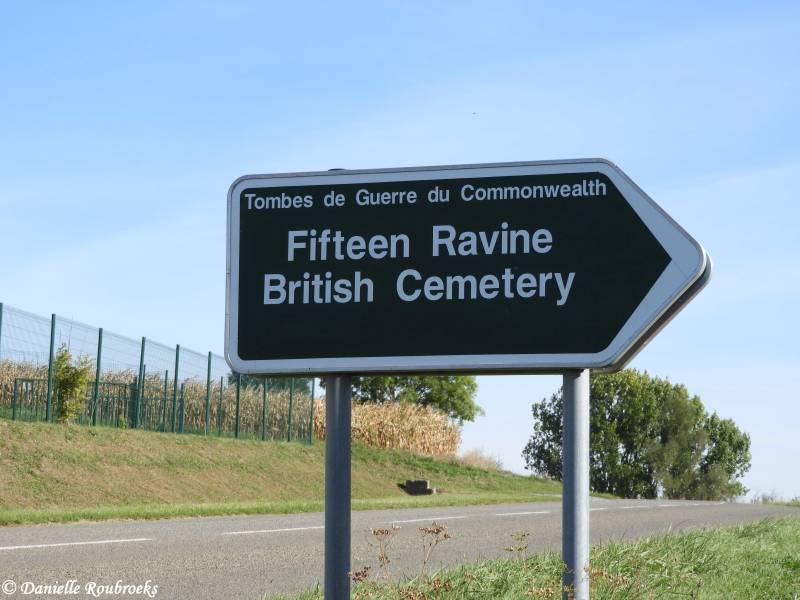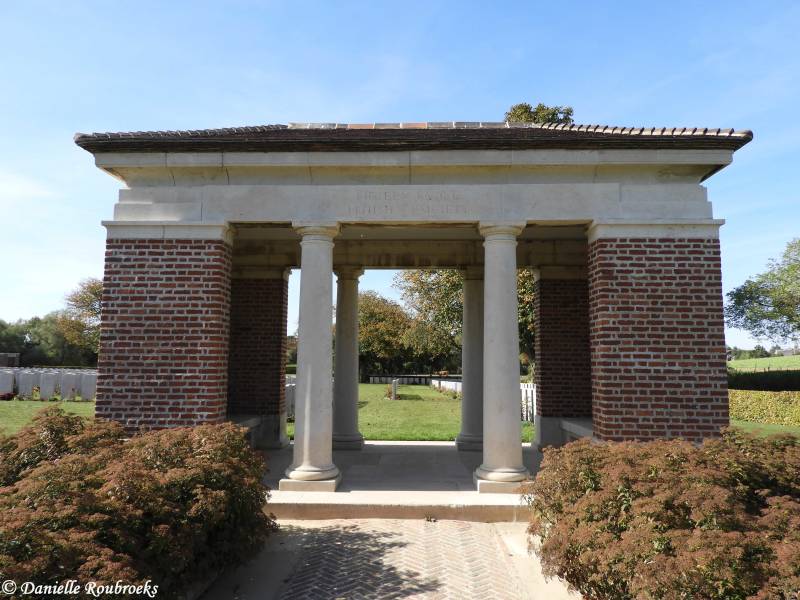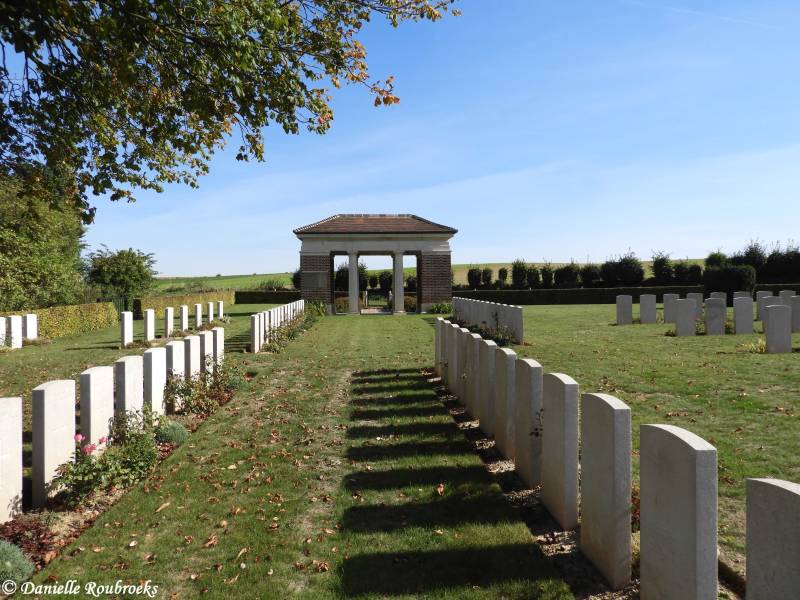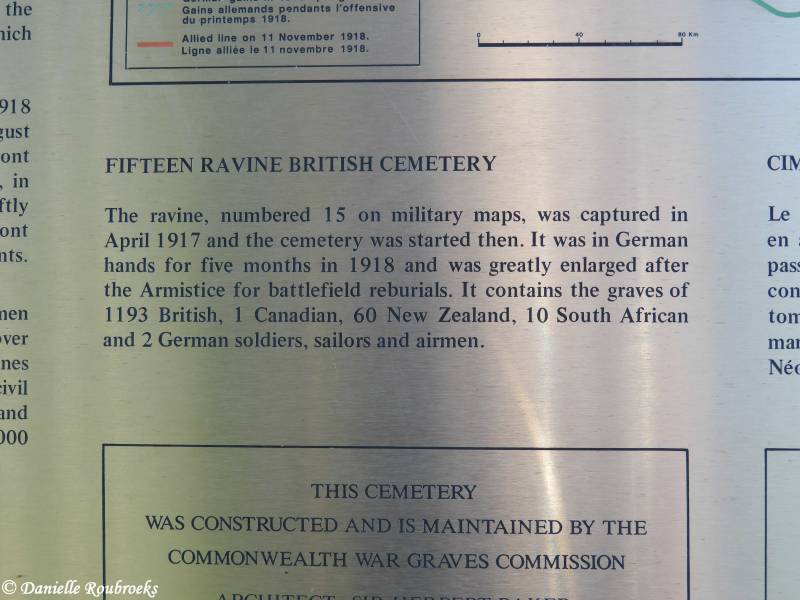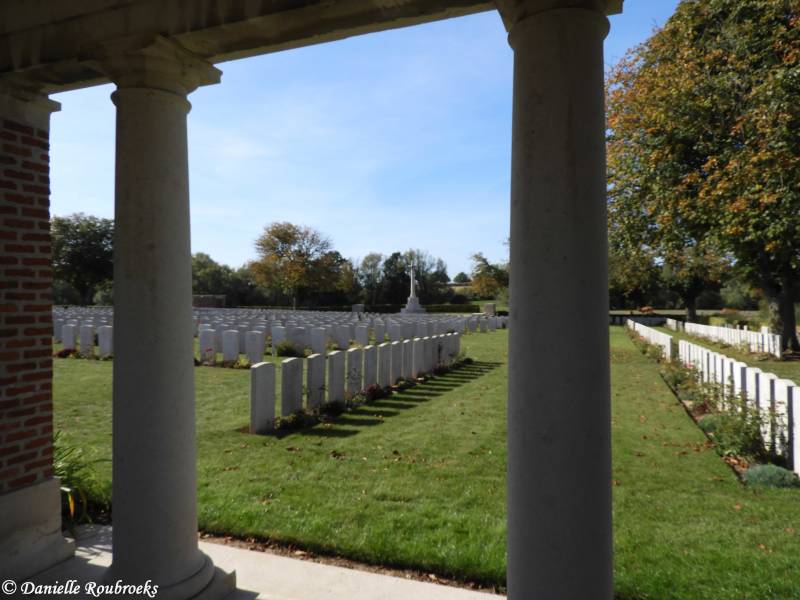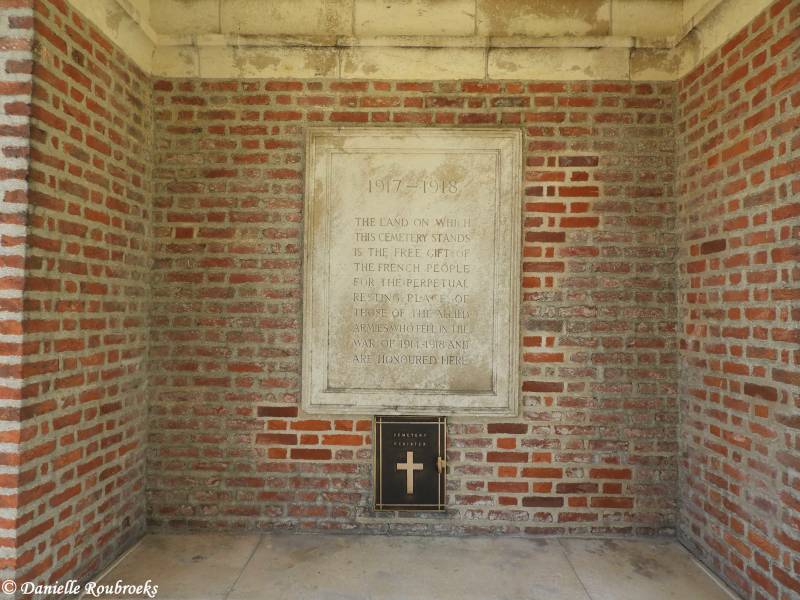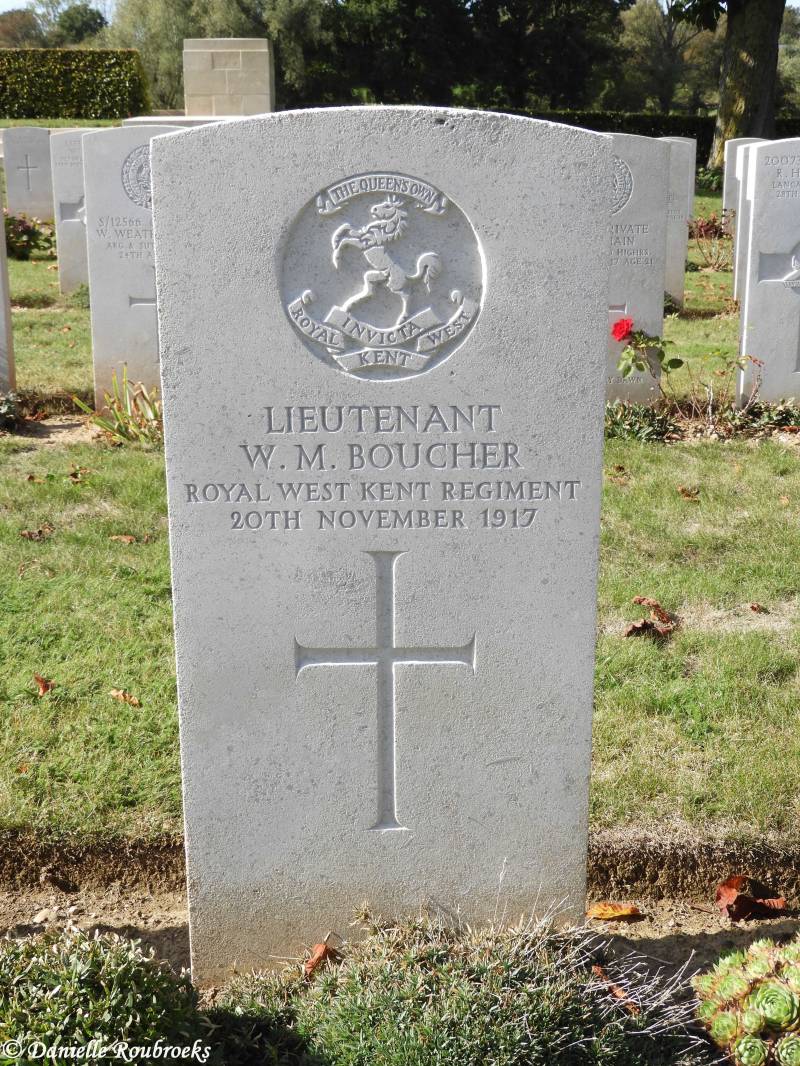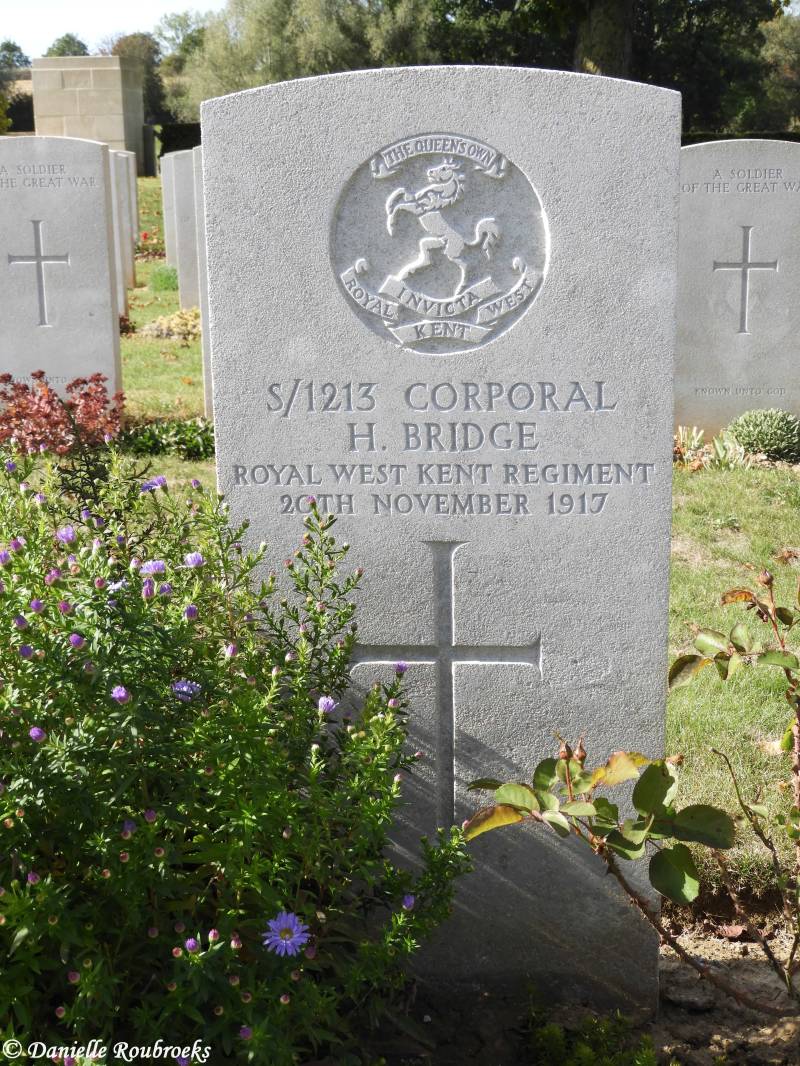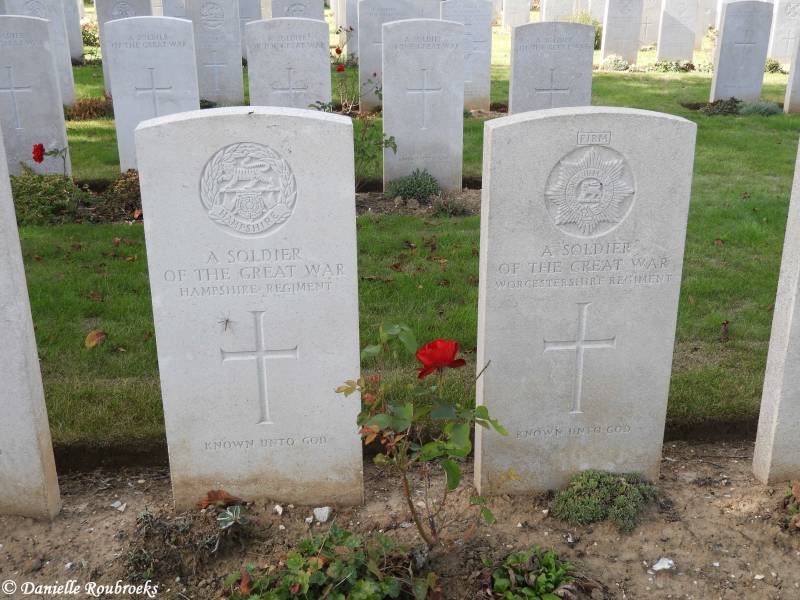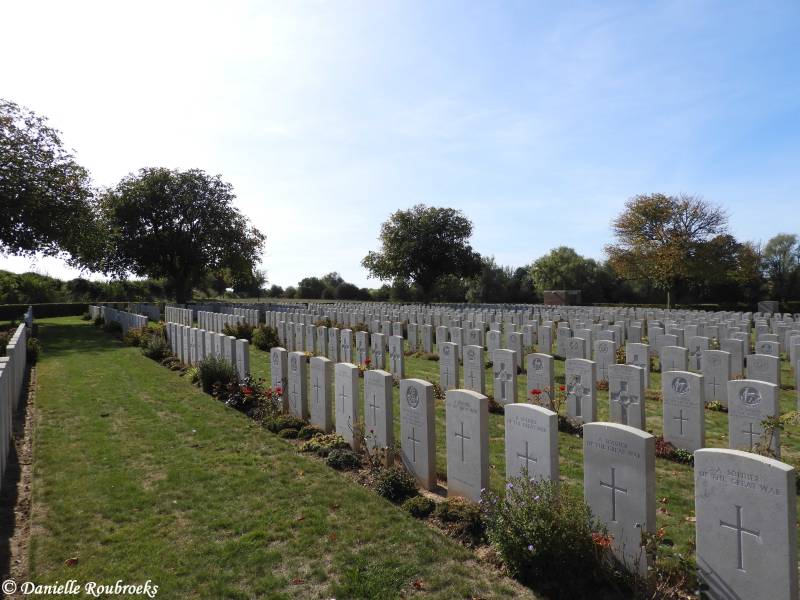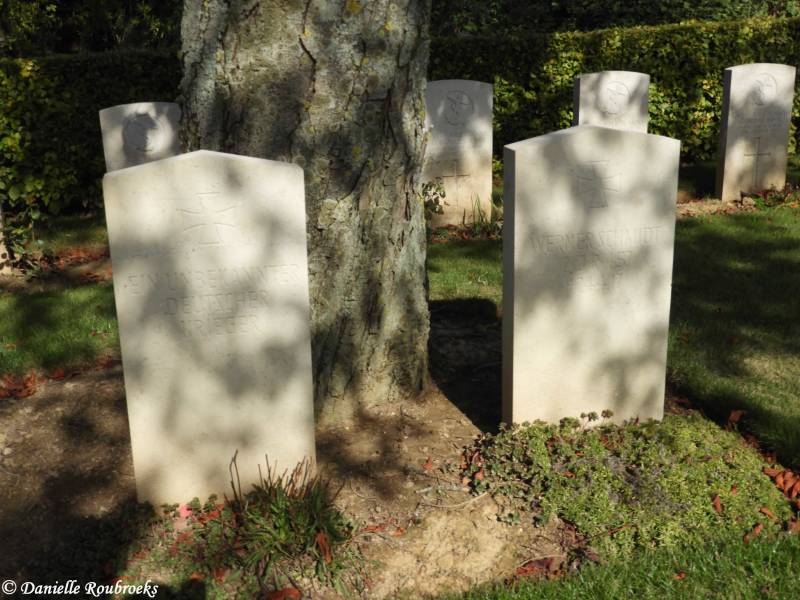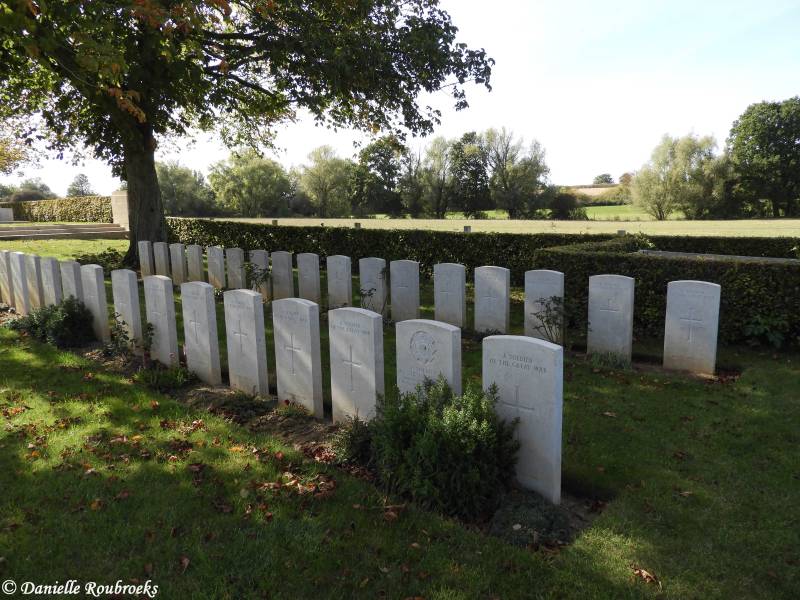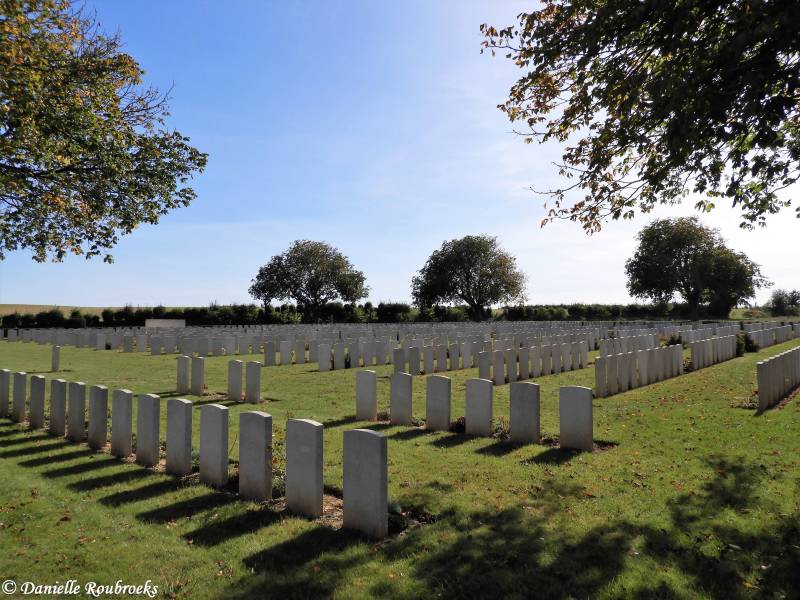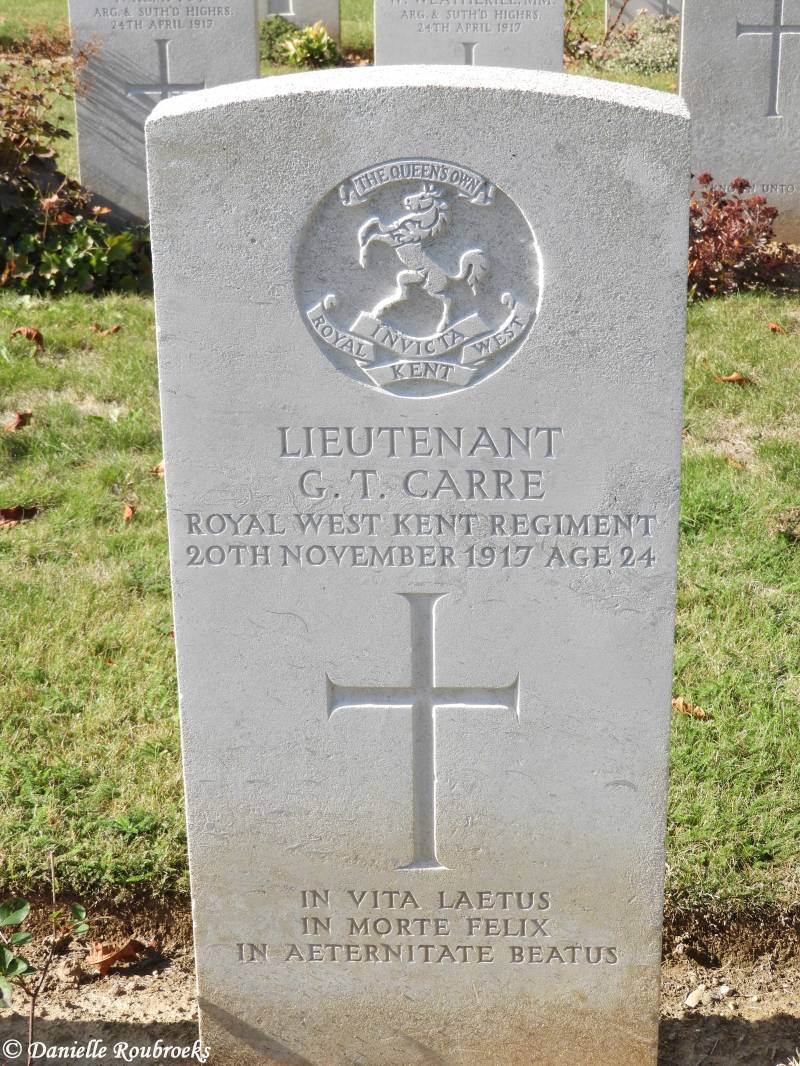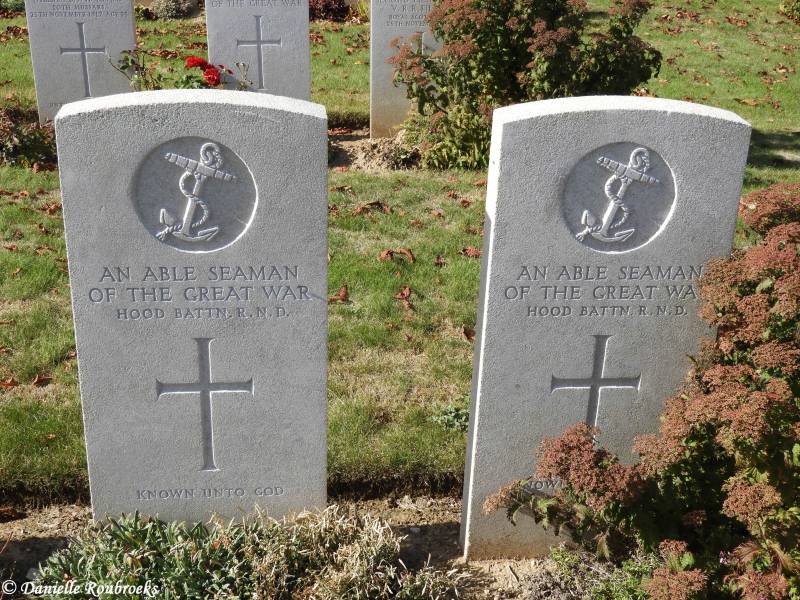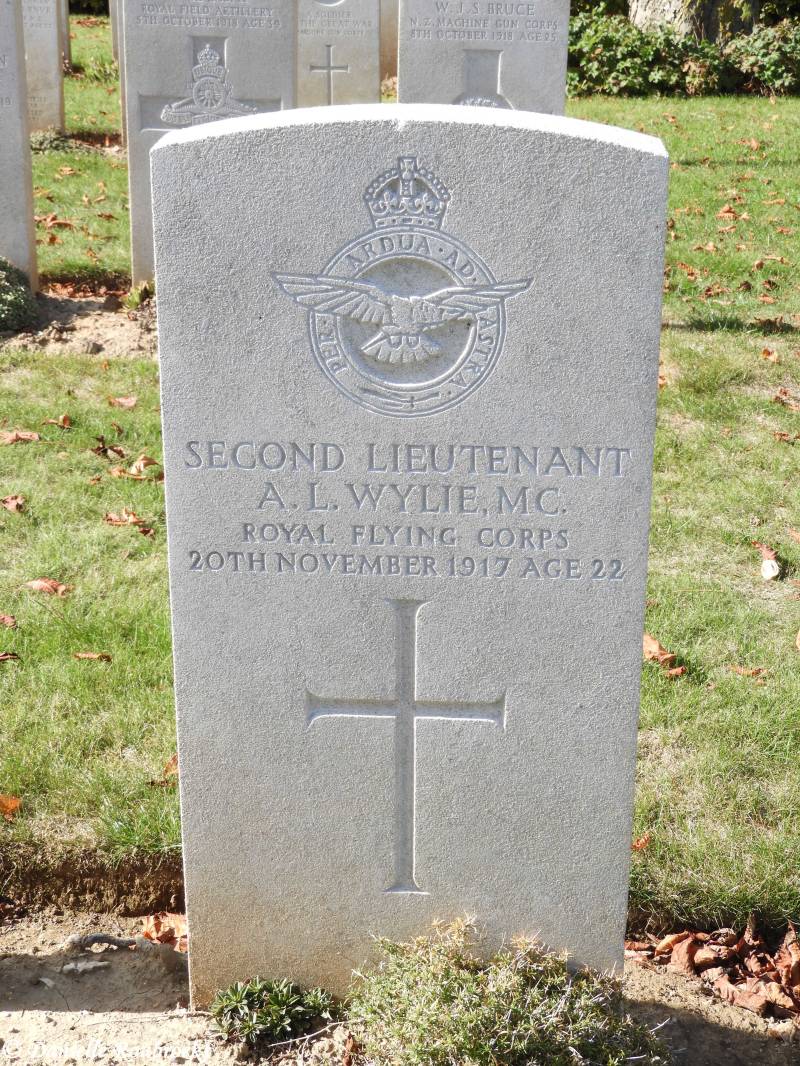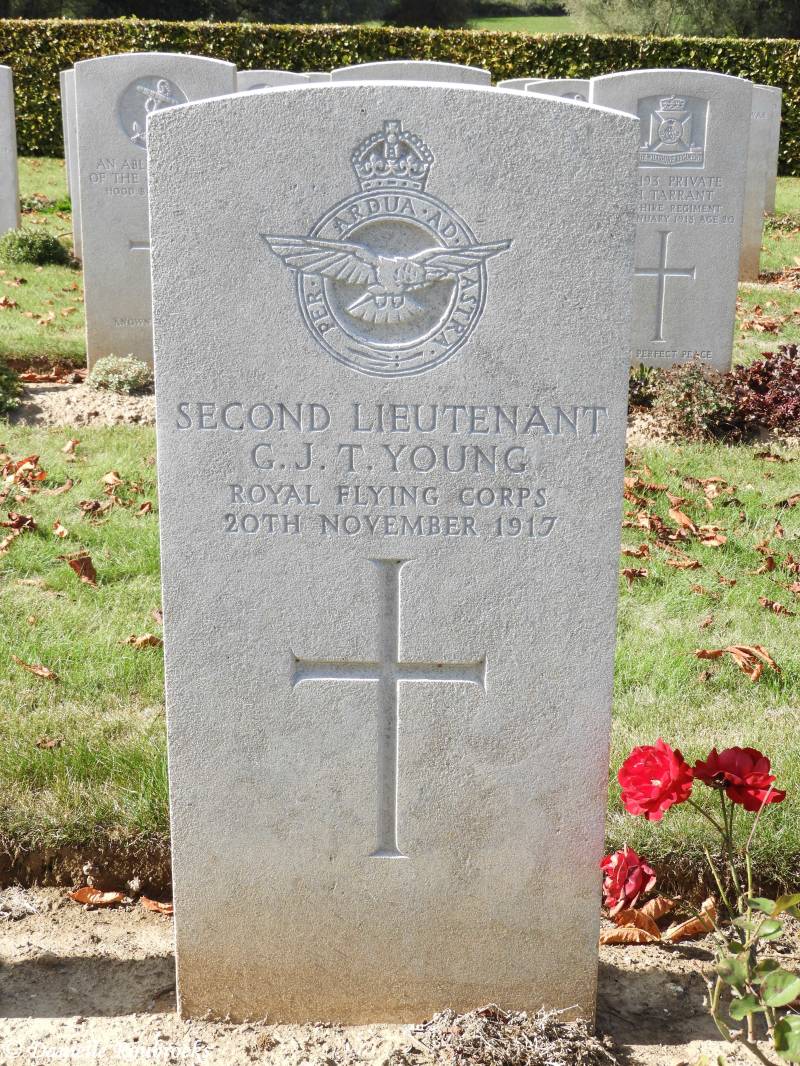Fifteen Ravine British Cemetery, Villers-Plouich
Historical Information (Source: CWGC)
"Fifteen Ravine" was the name given by the Army to the shallow ravine, once bordered by fifteen trees, which ran at right angles to the railway about 800 metres south of the village of Villers-Plouich, but the cemetery is in fact in "Farm Ravine," on the east side of the railway line, nearer to the village. The cemetery, sometimes called Farm Ravine Cemetery, was begun by the 17th Welsh Regiment in April 1917, a few days after the capture of the ravine by the 12th South Wales Borderers. It continued in use during the Battle of Cambrai (November 1917) and until March 1918, when the ravine formed the boundary between the Third and Fifth Armies. On 22 March, the second day of the great German offensive, the ground passed into their hands after severe fighting, and it was not regained until the end of the following September. In March 1918, the cemetery contained 107 graves (now Plot I), but it was greatly enlarged after the Armistice when graves were brought in from the battlefields south-west of Cambrai and other cemeteries.
Fifteen Ravine Cemetery now contains 1,264 Commonwealth burials and commemorations of the First World War. 740 of the burials are unidentified but there are special memorials to 44 casualties known or believed to be buried among them. Other special memorials commemorate ten men of the Argyll and Sutherland Highlanders, buried in Argyle Road Cemetery, Beaucamp, whose graves were destroyed by shell fire. The cemetery was designed by Sir Herbert Baker.
Served with
- United Kingdom (475)
- New Zealand (52)
- German (1)
Served in
- Army (466)
- Navy (58)
- Air Force (4)


